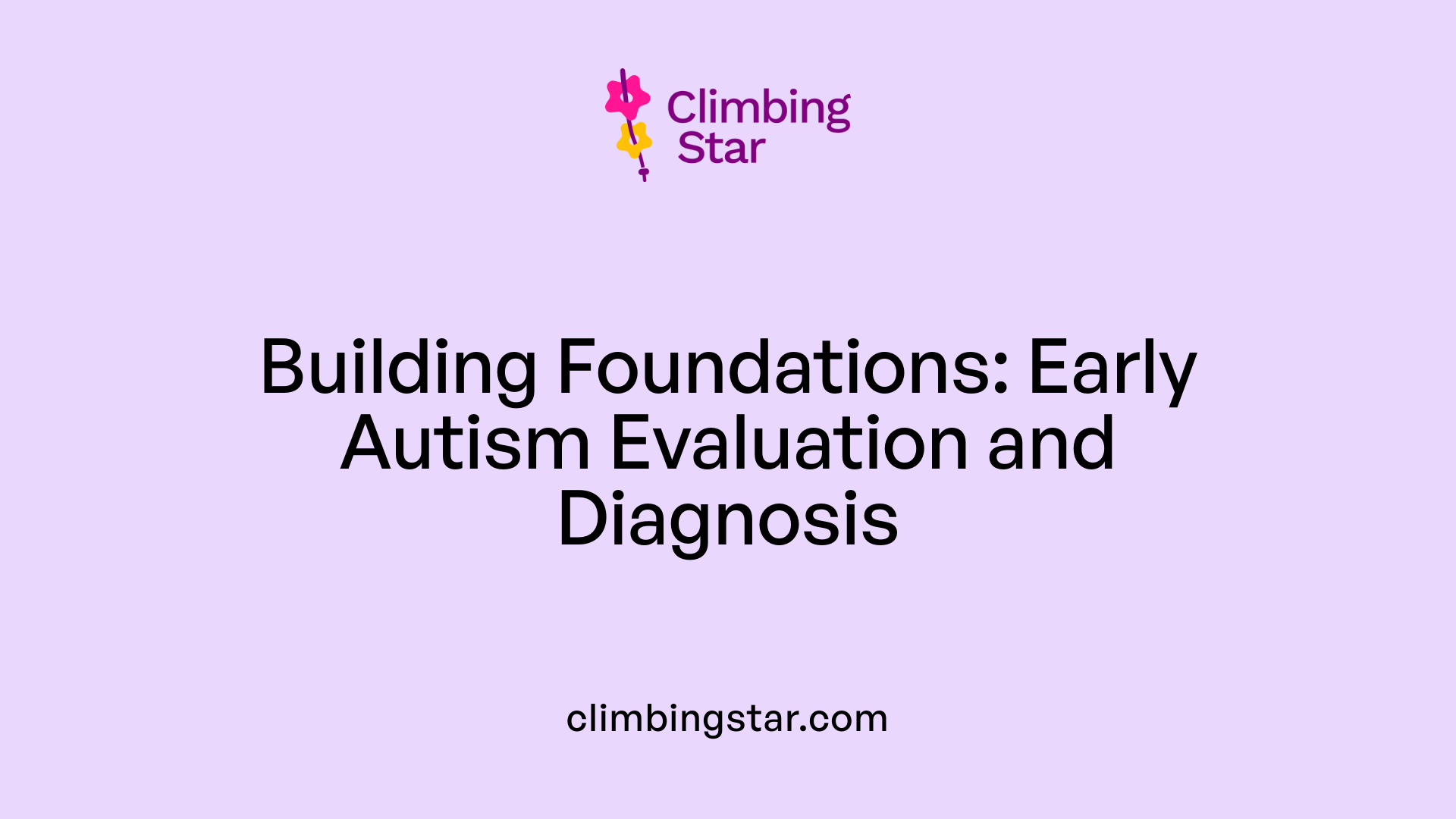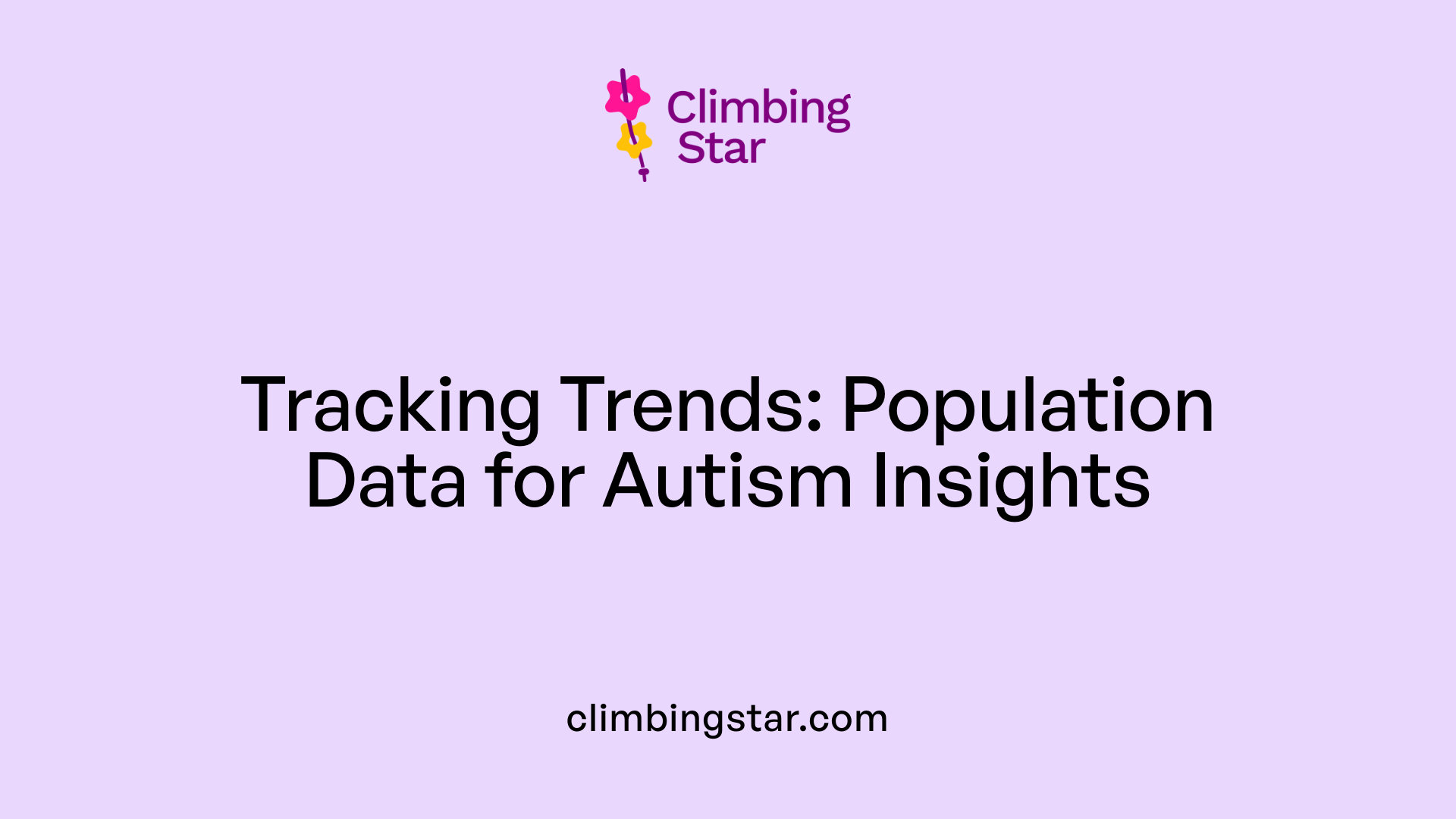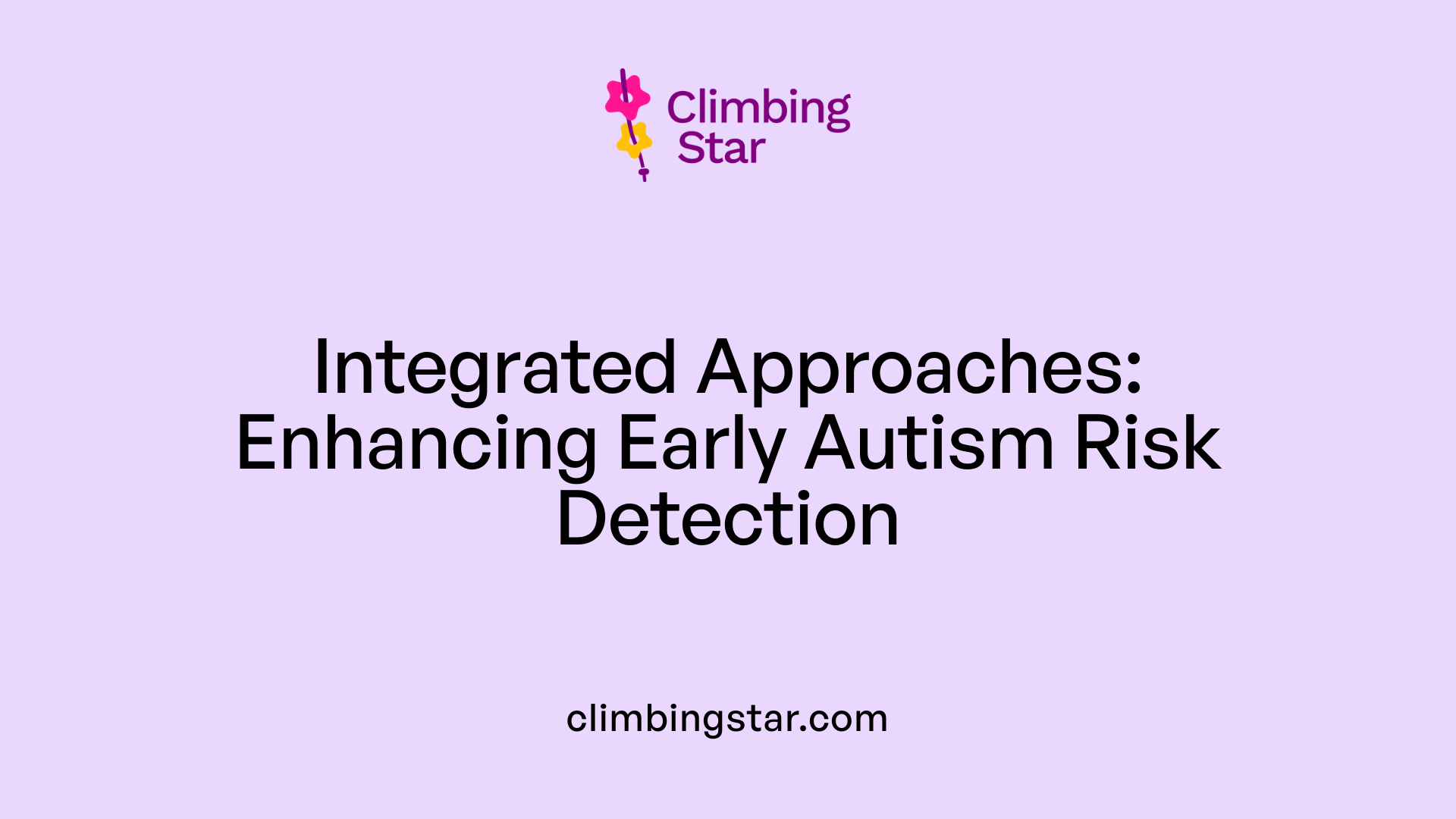Understanding the Need for Early Autism Risk Assessment
Early diagnosis and intervention of Autism Spectrum Disorder (ASD) are critical to improving long-term outcomes for affected individuals. Recent advances have introduced a variety of tools and methods aimed at calculating autism risk effectively, from clinical evaluation pathways to screening checklists and telehealth assessments. This article explores the current landscape of autism risk calculators, their components, practical applications, and the impacts on families and healthcare systems.
Clinical Evaluation Pathways: Foundations of Early Autism Diagnosis

What does the clinical evaluation pathway for autism diagnosis entail?
The clinical evaluation pathway is designed to gather comprehensive information necessary for an accurate autism diagnosis. It begins with a detailed review of developmental screening results to identify early signs. This is followed by in-depth caregiver interviews that explore the child's developmental milestones and medical history.
Observational assessments, like the Screening Tool for Autism in Toddlers and Young Children (STAT), are also included to directly evaluate behaviors linked with autism. Additionally, physical examinations help rule out other medical issues. All collected data are then synthesized to determine whether the diagnostic criteria for autism are met.
Why is early diagnosis emphasized in clinical pathways?
Early diagnosis plays a crucial role because it allows interventions to start during vital developmental periods. Programs like the EAE Hub report an average diagnosis age of around 33 months. Diagnosing autism at this early stage enables families and clinicians to begin tailored therapies that can significantly improve social, communication, and behavioral skills, positively influencing long-term outcomes.
What are typical wait times from referral to evaluation in early autism diagnosis programs?
Timely access to evaluation is essential to avoid delays in intervention. In early autism evaluation programs, the wait time between referral and formal assessment generally ranges from three to four months. This relatively short wait supports prompt diagnosis and quicker initiation of individualized care plans, such as referrals to therapy and community resources that benefit both children and families.
Screening Tools Tailored for Autism Risk Identification
What is the Modified Checklist for Autism in Toddlers, Revised with Follow-up (M-CHAT-R/F)?
The M-CHAT-R/F is a parent-report screening tool used globally to detect autism risk in children aged 16 to 30 months. It features approximately 82.5% sensitivity, meaning it correctly identifies a high proportion of children with autism spectrum disorder (ASD). The tool’s positive predictive value (PPV) is around 57.7%, indicating that about half of those who screen positive are later diagnosed with ASD. Notably, the PPV improves to 75.6% in high-risk groups such as siblings of children with ASD. The M-CHAT-R/F also effectively detects other developmental disorders, with a PPV of 89% for any developmental issue. Screening at multiple intervals, like 18 and 24 months, can enhance diagnostic accuracy.
How does the Autism Spectrum Screening Checklist (ASSC) function?
The ASSC is embedded within mental health assessment systems and focuses on five characteristic autism-related behaviors: restricted interests, preoccupation with routines, atypical social responses, sensory reactions, and difficulty adapting to change. Developed using data from thousands of assessments, it exhibits a sensitivity of 0.73 and specificity of 0.62 at a threshold score of 2+, balancing the ability to detect true positives and limit false positives. Its integration into routine assessments allows it to streamline early screening efforts and help prioritize children who need comprehensive diagnostic evaluations sooner, potentially reducing wait times.
How reliable are these screening tools across different populations?
Both M-CHAT-R/F and ASSC have undergone validation in diverse cultural and linguistic settings, including China, Iceland, Spain, and Turkey, demonstrating robust reliability and applicability. This supports their use in various global clinical environments, aiding early autism risk identification across different communities.
Benefits of Standardized Screening
Using standardized tools like M-CHAT-R/F and ASSC promotes early detection which is critical for timely intervention. They provide systematic, scalable methods that improve screening consistency and facilitate equitable access to resources, helping to reduce disparities in autism identification.
| Screening Tool | Age Range | Sensitivity | Specificity | Key Characteristics |
|---|---|---|---|---|
| M-CHAT-R/F | 16-30 months | ~82.5% | ~45.7% | Parent-report, widely used, improved PPV in high-risk groups |
| ASSC | Variable | 0.73 | 0.62 | Embedded in mental health assessments, focuses on 5 autism signs |
The Autism-Spectrum Quotient (AQ): A Self-Assessment for Adults

What is the Autism-Spectrum Quotient (AQ) and who developed it?
The Autism-Spectrum Quotient (AQ) is a self-administered questionnaire developed by Simon Baron-Cohen and his team at the Cambridge Autism Research Centre. Introduced in a 2001 study published in the Journal of Autism and Developmental Disorders, the AQ was created to measure autism spectrum traits in adults. This tool provides an accessible way for individuals to assess characteristics associated with autism without requiring a professional administration.
Which behaviors does the AQ evaluate?
The AQ evaluates a broad range of behaviors linked to autism spectrum traits. Specifically, it focuses on five domains:
- Social interaction
- Communication
- Imagination
- Attention to detail
- Tolerance for change Together, these areas offer a comprehensive profile of traits that can help identify autistic tendencies.
How is the AQ utilized?
The AQ serves multiple roles in both clinical and research settings. Clinically, it acts as a screening tool to flag individuals who may benefit from a full diagnostic evaluation. Researchers use it to study autism traits across diverse populations, contributing to a better understanding of the spectrum. Because it is self-administered, the AQ also promotes self-awareness, giving users insight into their behaviors and helping them decide whether to pursue further professional assessment.
Advantages of the AQ’s self-administered format
Its straightforward design tailored for adults makes the AQ highly accessible and easy to complete. This feature supports widespread use in clinics and research while empowering individuals to take an active role in their health. The AQ’s wide adoption has enriched autism research and improved early identification strategies for adults on the spectrum.
Telehealth Innovations in Autism Assessment

How effective are telehealth assessments compared to in-person evaluations for autism?
Telehealth autism assessments have shown diagnostic agreement rates between 80% and 88.2%, placing them on par with traditional in-person evaluations. This level of accuracy underscores telehealth's robustness as a reliable diagnostic approach in remote settings.
Which tools have been adapted for telehealth autism assessments?
Several gold-standard instruments have been successfully adapted for telehealth, including the Autism Diagnostic Observation Schedule-Second Edition (ADOS-2) and Autism Diagnostic Interview-Revised (ADI-R). In addition, specialized tools such as TELE-ASD-PEDS (TAP), Brief Observation of Symptoms of Autism (BOSA), and the Naturalistic Observation Diagnostic Assessment (NODA) are validated for remote use. These tools maintain high inter-rater reliability and strong validity in virtual environments.
What types of telehealth methods are used in autism evaluations?
Two primary telehealth modalities are employed: synchronous and asynchronous. Synchronous methods involve live, interactive videoconferencing between clinicians and clients. Asynchronous methods, on the other hand, use video recordings or digital questionnaires that clinicians review at a later time. Both techniques have demonstrated strong diagnostic validity and accuracy, allowing flexibility in clinical workflows.
How does telehealth improve autism assessment accessibility?
By eliminating the need for travel, telehealth reduces geographic and resource barriers, particularly benefiting families in rural or underserved areas. This improved accessibility ensures more timely evaluations, early diagnoses, and quicker referrals for intervention services, addressing critical gaps in care delivery.
| Aspect | Details | Impact |
|---|---|---|
| Diagnostic Accuracy | 80-88.2% agreement with in-person evaluations | Reliable remote diagnosis |
| Adapted Tools | ADOS-2, ADI-R, TELE-ASD-PEDS, BOSA, NODA | Maintains validity across platforms |
| Telehealth Methods | Synchronous (live video), Asynchronous (recorded/video questionnaires) | Flexible clinical practice modes |
| Accessibility Advantages | Overcomes geographic disparities; supports low-resource settings | Timely, equitable autism evaluations |
Behavioral Treatment Advances: The Role of Cognitive Behavioral Therapy (CBT)
What is the effectiveness of CBT for children with autism?
Cognitive Behavioral Therapy (CBT) has emerged as a beneficial intervention for children with autism spectrum disorder (ASD). Meta-analyses compiling data from 214 children across seven randomized controlled trials demonstrate that CBT significantly improves social skills, which are often impaired in autism. This improvement addresses a core symptom of ASD, helping children navigate social interactions more effectively.
How are social skills improvements measured in these studies?
Social skill gains are primarily assessed using standardized tools such as the Social Responsiveness Scale (SRS). The SRS quantitatively evaluates social impairment, providing researchers and clinicians with reliable measures of behavioral changes following CBT treatment. These tools ensure that improvements are objectively documented, bolstering the credibility of the findings.
What is the current research focus and gaps in CBT trials for autism?
Though the evidence supports CBT’s efficacy, most existing clinical trials concentrate on reducing anxiety symptoms in children with ASD. Social skills improvements often emerge as secondary outcomes rather than primary targets. This focus highlights a research gap, suggesting a need for further, dedicated studies examining how CBT directly enhances social abilities. More targeted research would help optimize therapeutic strategies designed specifically to meet social development needs in autism.
This area of research is steadily growing, reinforcing CBT's promise in helping children with autism enhance essential social competencies, while also identifying pathways to refine and focus therapeutic interventions.
Statewide Systems and Capacity Building for Autism Evaluation
What is the EAE Hub system and its purpose?
The Early Autism Evaluation (EAE) Hub system is a statewide network established by Indiana University School of Medicine. Its primary goal is to improve access to early autism evaluations by creating a coordinated clinical pathway across the state. This network ensures that children suspected of having autism receive timely assessments, typically within 3-4 months from referral, allowing for earlier diagnosis — on average at 33 months of age. The system integrates caregiver interviews, developmental screenings, observational assessments such as the STAT tool, physical exams, and data synthesis to provide comprehensive diagnostic evaluations.
How does the system support primary care clinicians?
A crucial component of the EAE Hub is its focus on capacity building within primary care. The program offers specialized training courses designed to improve clinicians’ skills in developmental screening and referral management. Beyond training, an ongoing learning collaborative supports primary care providers by sharing best practices and enhancing connections to intervention services. This supportive environment bolsters clinicians’ ability to accurately identify autism early and make appropriate referrals, thereby strengthening the frontline of autism care.
What are the benefits of this integrated evaluation approach?
The EAE system's integrated evaluation pathway benefits families and communities in several ways. It reduces long wait times for diagnostic assessments, making evaluations more accessible and efficient. Early and accurate diagnoses enable families to receive individualized care plans that include referrals to interventions, therapies, and community resources. This coordinated approach not only improves outcomes for children with autism but also facilitates earlier intervention critical for developmental progress. By embedding autism evaluation within a statewide network and supporting primary care capacity, the system promotes equitable and timely access to essential diagnostic and therapeutic services.
Population-Based Surveillance and Data Integration for Autism Prevalence

What is the CDC’s ADDM Network and its role?
The Autism and Developmental Disabilities Monitoring (ADDM) Network is an essential population-based surveillance system coordinated by the Centers for Disease Control and Prevention (CDC). Its primary role is to track the prevalence of autism spectrum disorder (ASD) among children in various US communities. It achieves this by conducting systematic reviews of health, education, and service records within defined geographic areas to identify children with ASD accurately.
How does ADDM collect and utilize data?
The ADDM Network gathers data through close collaboration with state health departments, educational institutions, and early intervention providers, formalized by agreements such as Memoranda of Understanding (MOUs). This cooperative framework enables the linkage of multiple sources, including clinics, schools, and health records, providing a comprehensive dataset that supports precise estimation of ASD prevalence within targeted populations.
What are the advantages of this population-based approach?
This approach delivers several key benefits:
- Comprehensive Coverage: The ADDM Network represents the largest ongoing autism prevalence tracking system in the United States, ensuring broad population representation.
- Longitudinal Monitoring: It enables tracking of prevalence trends over time, offering insights into changes within populations.
- Demographic Insights: The system collects data across diverse demographic groups, helping to identify disparities and tailor interventions accordingly.
- Resource Allocation: By accurately identifying population needs, the data supports informed decisions about resource distribution and service planning.
Age Focus and Demographic Tracking
The network prioritizes data collection for children at critical developmental ages—specifically 4 and 8 years old—with some follow-up data on selected 16-year-old cohorts. This focus aligns with typical ages for autism diagnosis and intervention planning, enhancing the relevance of surveillance data for clinical and educational contexts.
Supporting Resource Allocation Through Data Integration
By linking statewide health and education records, the ADDM Network facilitates a holistic view of autism prevalence and service utilization. This integration is invaluable for policymakers and service providers aiming to optimize early intervention programs, improve care coordination, and reduce disparities in autism diagnosis and treatment.
| Aspect | Description | Importance |
|---|---|---|
| Network Scope | Largest US autism prevalence tracking | Ensures comprehensive population representation |
| Data Sources | Health, education, and service records | Broad, detailed views of ASD prevalence |
| Collaboration | State health depts, schools, early intervention providers | Enhances data quality and completeness |
| Population Focus | Children aged 4, 8, and select 16-year-olds | Aligns surveillance with developmental milestones |
| Advantages | Trend monitoring, demographic analysis, resource allocation | Supports evidence-based planning and equity |
Synthesizing Autism Risk Calculators: Toward Equitable and Timely Diagnosis

How do autism risk calculators integrate various tools and approaches?
Autism risk calculators effectively combine multiple assessment methods to offer a comprehensive evaluation of autism risk. This integration includes parent-report screening tools such as the Modified Checklist for Autism in Toddlers-Revised with Follow-up (M-CHAT-R/F) and the Autism Spectrum Screening Checklist (ASSC), which help identify high-risk children early in development. Clinical evaluation pathways, like those used by the EAE Hub system in Indiana, provide detailed diagnostic assessments through developmental screenings, caregiver interviews, and observational tests.
Moreover, telehealth assessments utilize standardized 'gold standard' tools adapted for remote use, increasing accessibility for families in underserved areas. Behavioral scales like the Autism-Spectrum Quotient (AQ) add depth to risk profiles by evaluating social interaction and communication traits typically associated with autism. This multi-layered approach leads to accurate preliminary risk profiles, enabling tailored interventions and timely referrals.
Why is standardization of screening and diagnostic tools important?
Standardization is crucial for ensuring consistent and accurate identification of autism risk across diverse populations. Tools such as the M-CHAT-R/F and ASSC have validated sensitivity and specificity rates, promoting reliability in early screenings. Standardized clinical instruments and telehealth adaptations maintain high diagnostic agreement with traditional in-person assessments, fostering confidence among healthcare providers.
With uniform screening and diagnostic practices, healthcare systems can allocate resources more efficiently and ensure equitable access to autism-related services. This consistency also facilitates data sharing and longitudinal tracking of autism prevalence, such as through the CDC's ADDM Network, which supports public health initiatives and policy development.
What is the overall impact of early identification through these calculators?
Early identification made possible by these integrated risk calculators allows for prompt intervention, which is critical to improving developmental outcomes for children with autism. Early diagnosis—as demonstrated by programs like the EAE Hub—leads to tailored care plans that include behavioral therapies like cognitive behavioral therapy (CBT) to enhance social skills, a core autism symptom.
By reducing the wait time for evaluation and diagnosis, these tools help families access support and community resources sooner. Early interventions have been shown to significantly improve quality of life, functional abilities, and social engagement for autistic children. In addition, early detection helps build capacity among primary care clinicians through training and collaborative learning, further benefiting early childhood developmental health.
| Component | Description | Role in Autism Risk Calculators |
|---|---|---|
| Parent-Report Tools (M-CHAT-R/F, ASSC) | Screening instruments to identify high-risk children based on behaviors | Baseline risk detection and referral guidance |
| Clinical Evaluation Pathways | Comprehensive assessments including observation and history review | Diagnostic confirmation and individualized care planning |
| Telehealth Assessments | Remote evaluations using validated tools like ADOS-2 and adapted screenings | Expands accessibility and reduces geographic disparities |
| Behavioral Metrics (AQ) | Self-report evaluations focusing on adult autism traits | Supports broader trait identification and research applications |
| Early Intervention (CBT & others) | Evidence-based therapies targeting social impairments | Improves developmental outcomes post-diagnosis |
This synthesis underscores how the integration of standardized screening tools, technology-enabled assessments, and timely interventions forms a robust framework that advances early autism diagnosis while promoting health equity and improved lifelong outcomes.
Advancing Autism Risk Assessment for Better Outcomes
The evolution of autism risk calculators represents significant progress in early autism detection. By integrating validated screening tools, comprehensive clinical pathways, telehealth innovations, and behavioral therapy research, these systems provide a multifaceted approach to identifying at-risk individuals earlier and more accurately. Standardized tools like the M-CHAT-R/F, ASSC, and AQ empower families and clinicians alike, while telehealth expands access, particularly in underserved areas. Programs such as the EAE Hub exemplify how capacity building in primary care can ensure timely evaluations and interventions. Population-based surveillance further informs resource allocation and service planning. Collectively, these advances move the field closer to an equitable, efficient framework for autism risk assessment and intervention that can profoundly improve lifelong trajectories for those on the spectrum.
References
- Early Autism Evaluation Hub System
- Cognitive behavioural therapy to improve social skills in ...
- Autism Spectrum Quotient (AQ) - Psychology Tools
- Diagnostic Assessment of Autism in Children Using ...
- Meta-analysis of the Modified Checklist for Autism in Toddlers ...
- Autism Spectrum Screening Checklist (ASSC)
- Tracking Methods for Autism Spectrum Disorder







